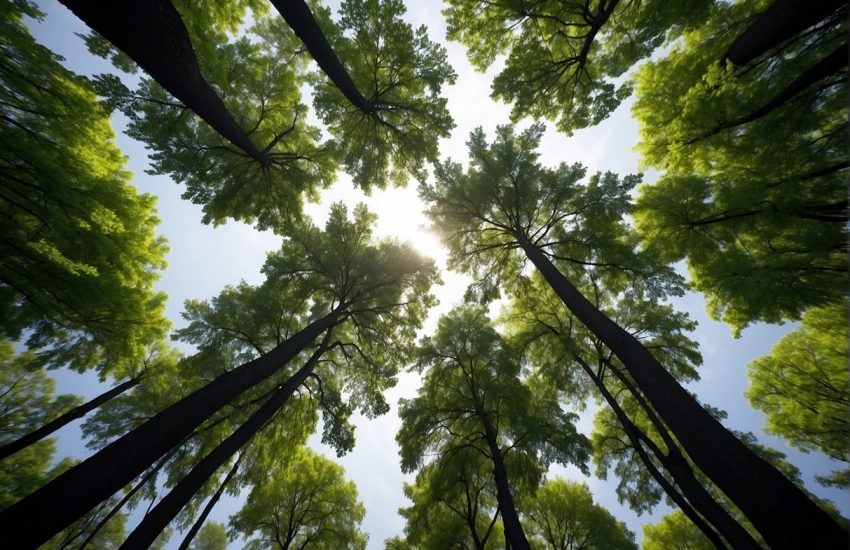Why is My Hibiscus not Blooming?
The hibiscus is a popular flowering plant all around the world. It is a member of the Malvaceae family of plants. These plants are prized around the world for their large, bright blooms and ease of care.
The members of this genus are known for their enormous, brightly colored flowers that are extremely showy and stand out among the crowd. The most common names for it are “rosemallow” and “hibiscus.”
If you want to fill your yard with lovely plants and blooms, the hibiscus should be on your list. These plants are not only one of the most beautiful flowers you will ever see, but it is also reasonably easy to care for.
These plants are commonly grown in gardens, but many species and cultivars can also be grown indoors, allowing individuals in colder areas to enjoy these magnificent plants.
Reasons For Hibiscus Not Blooming
Hibiscus does not flower if exposed to too much shade, is drought-stressed, or is extensively clipped in late spring. Too much nitrogen fertilizer encourages foliage growth but not blooming, whereas too much phosphorus fertilizer hinders blooming.
Hibiscus blooms during the summer.
Here are 9 reasons why your plant hasn’t flowered and how to encourage flowers on your plant.
1- Too Much Shade

The amount of sun received per day is the most critical factor for hibiscus to flower.
When grown in full sun, these plants flower to their best capacity, producing an abundance of fragrant flowers. If your plant is in a shadier part of your garden, it will have less energy to produce flowers in the summer.
Whether you have a tropical species of hibiscus (Hibiscus Rosa-Sinensis) or a hardier species of hibiscus (Hibiscus spp), always place your plant in an area with at least 6 hours of sun (hardier hibiscus can tolerate cooler temperatures).
If you have your plant in a shaded region of your yard or indoors, it is living in settings that are incompatible with its needs, causing stress and preventing blossoming.
If feasible, prune any vegetation shading your hibiscus, or transfer it to a sunny patio if it is potted.
Only the tropical types can be grown indoors (the plants are not always the finest houseplants), but make sure your plant is in the brightest window in your home to encourage blooming.
2- Too Much Phosphorous
While phosphorous is frequently used in fertilizers as a “bloom booster,” it is detrimental to hibiscus blossoming because they are susceptible to phosphorus build-up in the soil.
A build-up of phosphorus in the soil hinders the hibiscus roots from absorbing other essential nutrients, which might prevent your plant from blooming or possibly kill it.
Avoid using any fertilizer that isn’t well balanced (a well-balanced fertilizer has an even ratio of Nitrogen, Phosphorous, and Potassium NPK), and prioritize boosting soil fertility with organic mulches instead (such as well-rotted manure).
Hibiscus is peculiar in its phosphorous sensitivity. Therefore this can be a common cause of the flowers not developing for gardeners, as it is a very specialized concern.
3- Too Much Nitrogen
Hibiscuses are sensitive to excess phosphorus and even nitrogen when fertilizer is used in excessive amounts. Because too much nitrogen causes your plant to grow foliage instead of blossoms, keeping your nitrogen applications in check is critical.
If the hibiscus is infested, too much fertilizer might make it more vulnerable to pests like aphids, which feed on the sap and can cause flower buds to drop.
Hibiscuses are robust feeders; however, the best approach to feed them is to enrich the soil by adding mulch (compost, leaf mold, or well-rotted manure) and then use a half-strength general liquid fertilizer once a month during the Spring and Summer. This is a nice balance for providing the hibiscus with the nutrients it needs to flower without overdoing it and causing the plant to stop blooming.
If your plant has no flowers but many greeneries, reduce the fertilizer and ensure it gets enough water. They might not flower this year, but they should flower with more rigorous fertilization the following year.
4- Pruning at the Wrong Time of Year
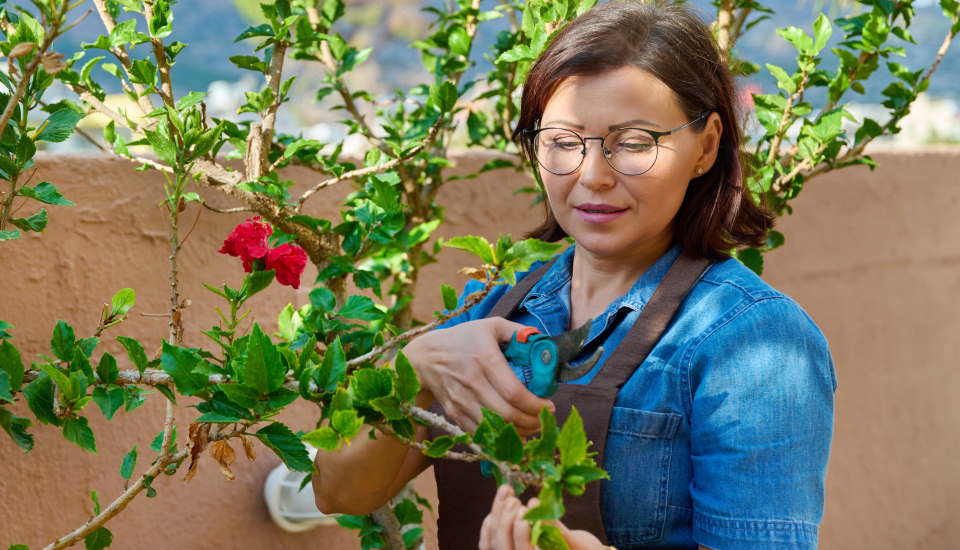
Hibiscus flowers require new growth; thus, cutting during the growing season can significantly reduce blooming.
Heavy pruning within the early spring can either prevent them from blossoming in the summer or considerably delay blooming.
If blossoming is postponed, the flowers are more likely to bloom when the weather is cooler in the fall instead of hot in the summer. They wilt or drop significantly more quickly than they would otherwise.
Hibiscus flowers best after a modest pruning at the end of the growing season, around September/October, so that new growth can support the flowers in the spring.
5- Hibiscus in Pots Not Blooming
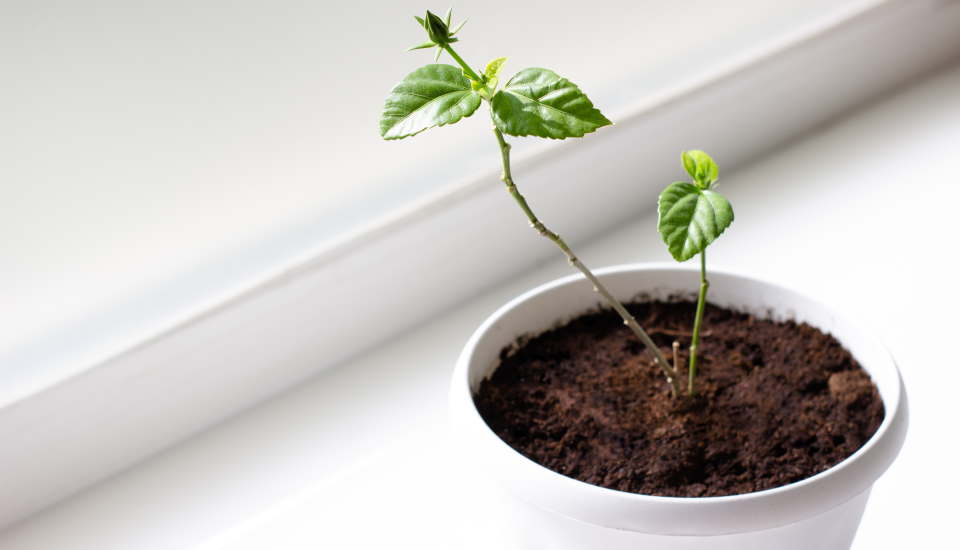
The same causes for hibiscus not blooming apply to potted hibiscus, but there are some factors unique to pots that will prevent your plant from blooming.
If your hibiscus in a pot isn’t blooming, it’s probably because:
- If they have been in the same pot for a long time and have wiped out all of the nutrients available. Because pots have a limited capacity for soil, there are fewer nutrients accessible. Over time, potting soil can become compacted, and repeated watering can wash away water-soluble nutrients.
- Small pots quickly dry out. To flower, hibiscus needs full light, warm temperatures, and often moist soil. Smaller pots hold less water and heat up more quickly in the soil, causing evaporation and hibiscus drought stress, even with constant watering, and preventing blooming.
- Pots that do not have drainage holes in the bottom. Hibiscus require well-draining soil, so if they’re planted in decorative pots without a drainage hole in the bottom, water pools around the roots, causing root rot, inhibiting blooming, and maybe causing the plant to die down.
- Smaller pots can induce root entanglement and even obstruction of the pot’s drainage openings, resulting in slower drainage, soggy soil, and an increased risk of disease.
If your plant has been growing in the same soil for a long time, it’s time to re-pot it to ensure your plant is healthy and blooming.
Repot with high-quality multipurpose compost to improve soil structure and moisture retention.
Repot the plant in a larger pot so the roots may grow and gain access to the nutrients and moisture they need to flower without drying out too rapidly in the hot summer sun.
To ensure proper drainage, make sure the pot or container has drainage holes in the base and a one-inch layer of gravel in the bottom.
6- Climate can Affect Hibiscus Blooming
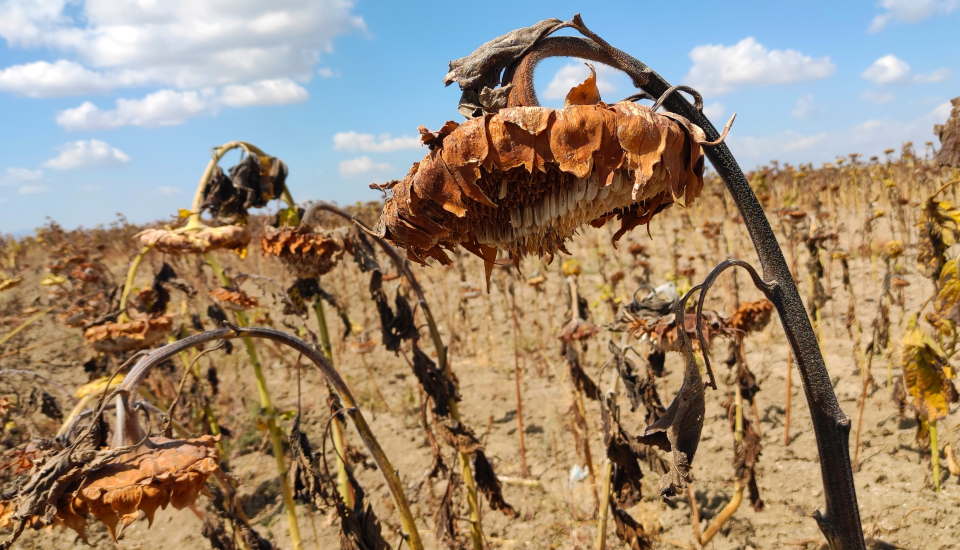
Hibiscuses are native to Asia’s tropical and subtropical climes, which thrive in hot, humid weather.
Gardeners grow two different types of hibiscuses:
- Tropical hibiscus (Hibiscus Rosa-Sinensis)
- Hardy hibiscus (Hibiscus spp.)
Tropical hibiscus prefers warmer, humid climates and will not endure frigid temperatures.
Hardy hibiscus can withstand a broader temperature range and flower for longer than tropical hibiscus. However, this can vary according to the type.
Tropical species are significantly more challenging to care for outside their native temperatures. As a result, they do not flower as rapidly as they do in their native climates. They are also more likely to be stressed if conditions are not ideal.
The hardy species bloom more readily in a wider range of climates and situations.
If you’re having trouble getting your plant to flower, see what species it belongs to. Then plant the suitable hibiscus for your climate for better blooming.
7- Hibiscus do Not Flower Due to Drought Stress
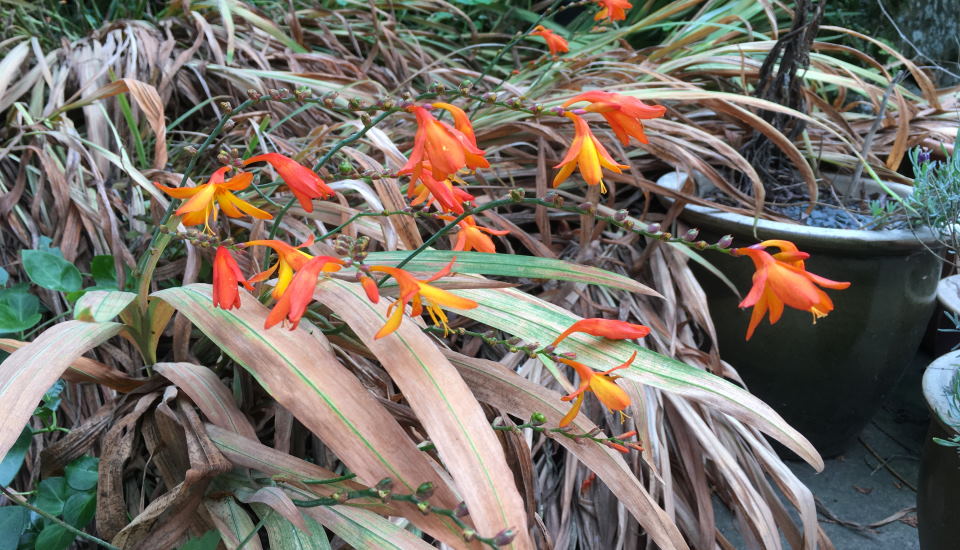
Hibiscuses are tropical plants that thrive in soil with high organic content and in locations where there is a lot of rain. If your plant is not blooming, it’s possible that it’s stressed from the dryness.
Drought stress is usually brought on by:
- Watering is in progress. While older hibiscus bushes may not require as much regular watering, potted and younger shrubs should be irrigated as needed to keep the soil moist and maintain plant health and blooming throughout the summer.
- The moisture retention capacity of sandy soil is low. If your soil has a lot of sand or stone, it will drain too quickly for your plant’s roots to draw up moisture, causing drought stress and perhaps reducing blooming.
You should give your hibiscus a good soak with a hose and then apply a layer of mulch to the surface of the soil around your plant to boost the soil’s ability to absorb moisture.
Compost, leaf mold, and well-rotted manure are ideal hibiscus mulches because they retain moisture, add nutrients, and keep the soil pH at the right level for your plant.
Apply a layer of mulch around your hibiscus plants at the start of Spring to improve the soil structure.
Watering frequency is determined by your environment and weather, but you can determine how quickly your soil dries up by testing it for moisture to a finger deep on a regular basis.
Give your plant a good bath as soon as the soil is dry to ensure a healthy plant that blooms in the summer.
8- Hibiscus Does Not Flower in Slow Draining Soils
Hibiscus will not flower if the ground is flooded. While these plants prefer moist soil, it also has to be well-draining.
If the soil is thick clay or compacted, water can pool around the roots of the hibiscus, causing stress and promoting the conditions for fungal diseases like root rot, which can cause your plant to die back.
Reduce watering if the soil seems too wet or appears soggy, giving the soil around the roots a time to dry out.
These plants can not survive well in saturated soils like thick clay, so transplant them to a well-draining area or into a container if it is small enough.
The best way is to grow hibiscus in pots, containers, or raised beds for boggy low-lying gardens since they offer better drainage and you can adjust the soil profile to make it optimal for your plant to grow and flower, which is considerably easier than amending waterlogged garden soil.
9- Hibiscus Flower Buds Can Fall Off Due to Pests
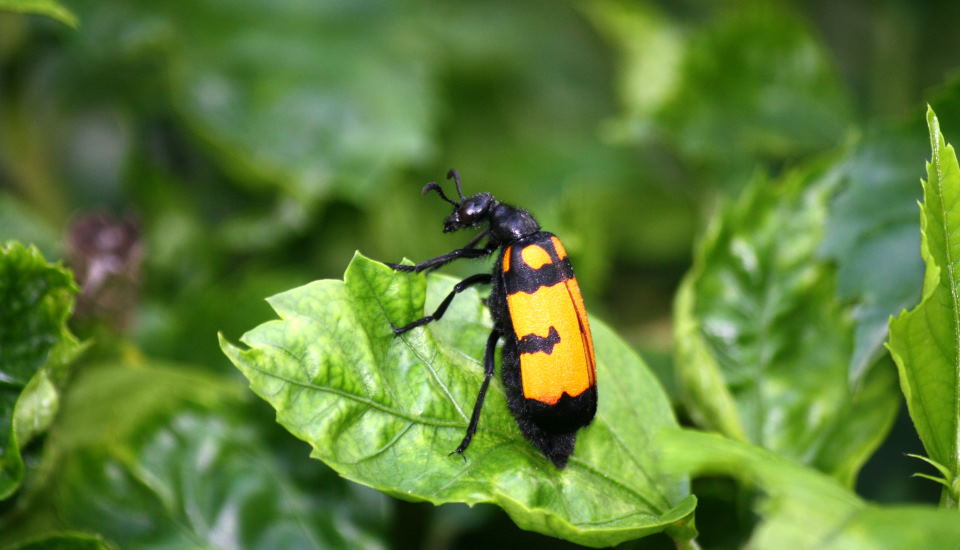
These plants are generally resistant to pests and diseases, but if the plant is stressed for any reason, the danger of infections that cause hibiscus flower buds to drop or open improperly increases.
These are the stressors:
- Drought or flooded soil can cause water stress.
- Too much fertilizer.
- Soil with little nutrient content.
Insects like as mealy bugs, aphids, thrips, and spider mites are attracted to soft and succulent foliage caused by too much nitrogen from fertilizer.
Inspect the leaves for signs of insect pest infestations, and if you find any, use an organic insecticide made from neem oil, as neem oil is not poisonous to other animals in your garden and can help you solve your insect problem.
It usually takes two or three applications of the spray to clear out an infestation on leaves. Your plant may not recover in time to flower this year, but by controlling pests, it will remain healthy and flower the next year.
Conclusion
Too much shadow, drought stress, or too much fertilizer are the most common reasons for these plants not blossoming. By immobilizing nutrients in the soil, too much phosphorous inhibits hibiscus blossoms. In contrast, too much nitrogen increases foliage at the expense of flowers.
Hibiscus flowers on new growth. Thus pruning at the incorrect time can hinder blossoming. In the spring and summer, avoid pruning. The fall is the best time to prune these plants for blooming.
These plants’ blooming can be prevented by drought stress or slow-draining soils. These plants necessitate continually moist, well-draining soil to produce blossoms that are not stressed. Unhealthy plants are less resilient and more susceptible to pests and disease.
You may also be interested in:


